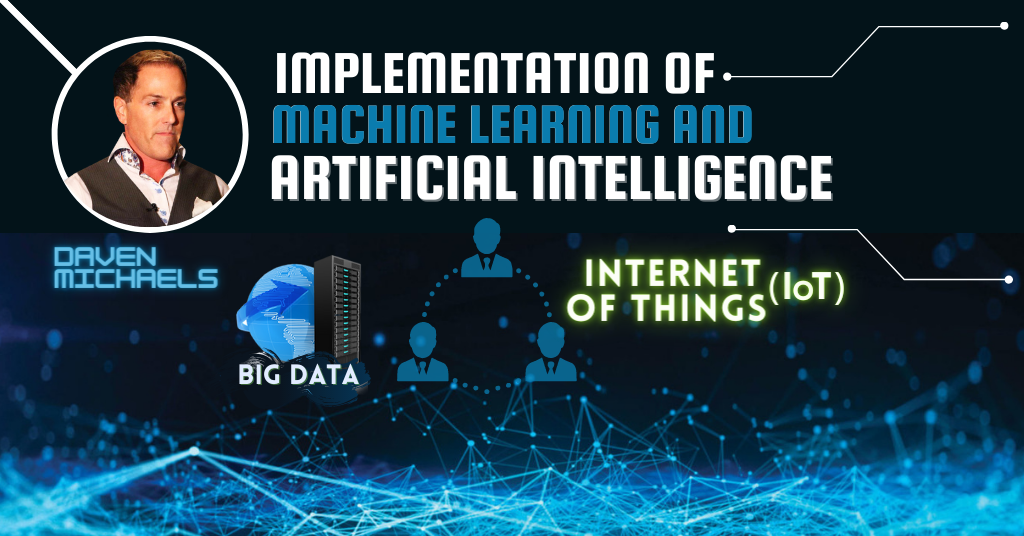
The integration of artificial intelligence (AI) and machine learning features is about to drastically change the modern business landscape. A recent survey of Fortune 500 CEOs showed that in 2017, 81% believe that these technologies will have a positive impact on their organizations, compared to 54% in 2016. In addition, the recent
Forrester technology forecast report estimates that “2017 will be the year of the flood of big data, fueled by a voracious appetite for deeper contextual insights that drive customer engagement through mobile devices, wearable technology and [the Internet of Things (IoT)]”.
The possibilities for an impactful business transformation are endless. More and more organizations are realizing the possible competitive advantages included in customer and business data and are starting to invest in AI and machine learning to harness the value of that data. However, AI and machine learning bring not only endless possibilities for business leaders, but also network management challenges that you must begin to prepare for.
Basic principles of AI and machine learning
The benefits of these prediction and analysis features are quite comprehensive. A retailer, for example, can collect and process customer data to identify relevant trends, such as fashion interests for the next collection, and use these insights to inform its inventory decisions. Other organizations can leverage business data to drive data-driven project management, allowing business leaders to more accurately determine how long certain operations can last and how much they will cost.
However, these features also place more responsibilities on the shoulders of network administrators, starting with the need to increase familiarity with various mathematical methods and algorithmic scripts in order to obtain the business result desired by the company.
Are you implementing neutral, supervised or unsupervised network algorithms? What kind of task should the algorithm perform? Decision trees? Ratings? Cluster analysis? Pattern Recognition?
In most cases, your organization will use a programming specialist to do this, but it is up to you, as a network administrator, to have a fundamental understanding of what these processes are in order to properly prepare your network and security processes. There are several results that can arise from each data process and unique algorithm; therefore, you must be prepared to follow six basic steps in order to properly define your problem and map out a specific formula.
Fortunately, technologies such as Software Defined Networking (SDN) and IoT have already given IT professionals, at least to some extent, a taste of how machine learning deployments will affect the network and management best practices. . With SDN, you create a template and associated behaviors, and the software-driven network implements changes as needed.
As a product of this technology, machine learning goes a step beyond the fundamentals of SDN when looking for an X action (perhaps the priority network traffic is becoming congested) for automatic correction by doing Y (adjusting bandwidth resources).
Implementation considerations
For all the benefits, AI and machine learning features require attention to certain considerations; the first of these is the cost. Taking advantage of these technologies is not cheap. The basic principles of these technologies are rooted in data-driven algorithms, which enable machines to develop learned responses or predictive resources. As a result, with AI and machine learning comes the data (or rather, big data) that requires resource allocation, not just experts like programmers, but also other local resources like storage, server CPUs, network bandwidth and cloud-hosted storage services.
At the same time, while the idea of quickly adopting new technology to anticipate transformative advantages is tempting, it is essential that you and your organization set realistic deployment expectations: it can be a little ambitious to assume that an AI deployment or machine learning go live and generate actionable insights in three months. If you are not careful, you can hinder your company instead of helping it.
To realize these benefits more effectively and accurately, your organization must anticipate expectations, go through the various stages of preparation for deployment, know the problem you want to solve and ensure that you have the data necessary to solve it.
Daven Michaels is a New York Times Best Selling Author and CEO of premiere global outsourcing company, 123Employee. The company employs hundreds of young bright individuals on three continents. His International event, Beyond Marketing Live! inspires entrepreneurs to build & grow their business with revolutionary ew theories and systems allowing them to design the business and personal lifestyle of their dreams.


1 thought on “IMPLEMENTATION OF MACHINE LEARNING AND AI”
Good resource!!! thank you